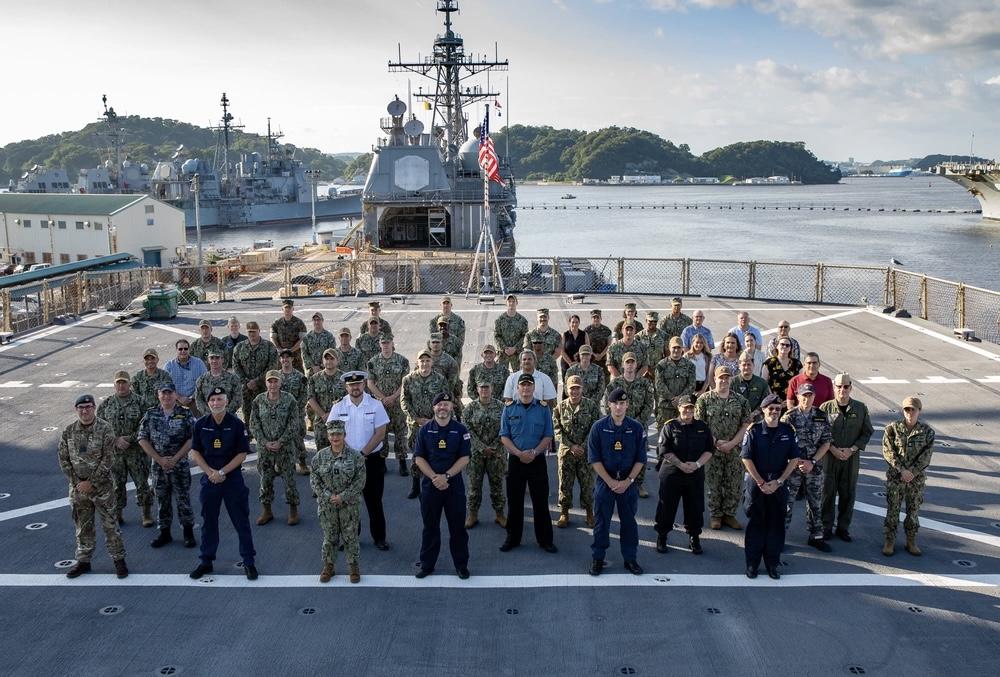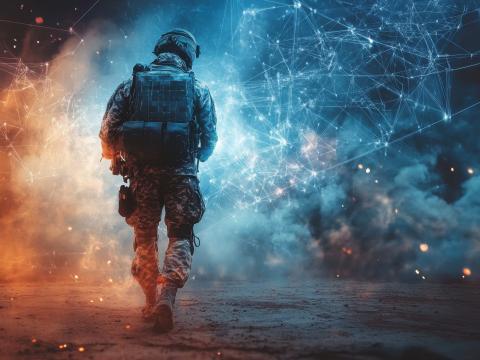Data Needs To Be Consumable for Warfighters
With more data available to warfighters, the military needs tools and capabilities that advance information warfare and help discern and organize data, said information warfare leaders participating on a panel at the WEST 2024 conference in San Diego.
“If you just think about it, it is ‘see, understand, decide, act,’” said Lt. Gen. Robert Skinner, USAF, director, Defense Information Systems Agency (DISA), and commander, Joint Force Headquarters-Department of Defense Information Network. “It's a very simple concept. But it requires technology to help. Do we have the right sensors in the right places? And it doesn't matter which domain that you're talking about. Is the right information being collected to then enable decision-makers’ calculus? Does it give them the right information to decide what the best course of action is?”
With the advent of more artificial intelligence (AI) capabilities, the military needs to be able to parse out data-use cases for decision-makers and separate the ability for automated action based on leaders’ decisions, Gen. Skinner noted.
Moreover, the military needs technology that allows complex problems to be solved through simple processes. “I would offer that the organization or the person or the team that does that the fastest is one that's going to have that deposition advantage,” the DISA director said. “I would reach out to industry to ask how do we make that faster and more clean and more crisp.”
It is the notion that information has to be in a consumable format, confirmed Jane Rathbun, chief intelligence officer (CIO), Department of the Navy.
As such, she prioritizes data maneuverability. The Navy CIO, who oversees a $12 billion information technology portfolio, is also advancing zero-trust architecture, AI, moving data to the cloud, improving transport, cybersecurity and the Secure Internet Protocol Router Network, or SIPR, 2.0.
“My key focus areas right now are AI, data maneuverability and moving to a zero-trust model across all of our platforms.”
The ‘buy and replace’ model, we are good at that. [We are] really good at identifying technology. But that's not the space that we need to operate in moving forward. The space that we need to operate in moving forward is a ‘buy and sustain’ model.
In addition, Rathbun emphasized transforming the authority to operate, or ATO, process, where officials authorize software, tools, services or applications to connect securely to the network. The CIO envisions a daily ATO process instead of months or years.
“[Being] cyber ready, and moving away from this idea of an ATO every three years to one where you're earning the right to operate every day, that you are producing the right telemetry off of your systems so that the cyber operators know what's occurring and can act and respond and can manage the risk,” she ventured.
All of these efforts are geared toward having the Navy provide maritime-related decision advantage. That goal is guiding policies and their investment priorities. “That drives what we think about, how we modernize, what we're modernizing and what we're focusing on,” Rathbun noted.
With information as a warfighting imperative, focusing on the related enabling technologies is essential. The military, with operations with allies and partners in mind, needs to extend data, compute and storage to an even greater range, said Lt. Gen. Susan S. Lawrence, USA (Ret.), AFCEA International’s president and CEO, moderating the panel.
“As we look at those domains in the joint and combined environment, extending cloud capabilities to the edge—and everything has got to operate at the edge—we need to plan our architectures and build our solutions from the edge back to the Pentagon, not the other way around.”
The Department of the Navy is adroit at identifying new tools, added Jennifer Edgin, assistant deputy chief of naval operations for information warfare (N2N6B), Office of the Chief of Naval Operations. “The ‘buy and replace’ model, we are good at that; [we are] really good at identifying technology,” she stated. “But that's not the space that we need to operate in moving forward. The space that we need to operate in moving forward is a ‘buy and sustain’ model. And that's not just a statement about cybersecurity patches. That's embodying the Defense Innovation Board’s notion that ‘software is never done.’”
In November, Edgin unveiled the Navy’s inaugural Blueprint for a Modern Enterprise Information Ecosystem. The plan is a “holistic approach” for a reference architecture for the enterprise information ecosystem, an enterprise data model and an enterprise microservices model. The blueprint also examines information governance and how the service will implement its modernization.
The goal is to “deliver and sustain secure, resilient, survivable, integrated, and interoperable mission performance throughout the lifecycle of information systems,” according to the Navy.
Within the Marine Corps, the recognition that information is the seventh warfighting function is not necessarily known by every Marine, said Lt. Gen. Matthew Glavy, USMC, the deputy commandant for information, Headquarters, U.S. Marine Corps. That understanding needs to change, given the importance of information overmatch. The United States has to win in the digital arena —“the 010101s fight,” he said. The nations that win the information overmatch will prevail.
The general cited the example of Ukraine’s innovative use of autonomous Jet Skis to deliver deadly kinetic effects against Russia. Gen. Glavy cautioned, however, that nations also need to be ready for any countermove and be resilient. “They are going to come back at you, and that has to be accounted for in planning and execution,” he emphasized. “We find ourselves in this move-countermove, and we can only imagine at the peer competitive level what that will be like.”
We have taken a new approach to maritime domain awareness in the MTS, and we call it Project Minerva. [It] is a new way to look at how do we deal with our stovepipe systems.
Meanwhile, the U.S. Coast Guard is advancing data-sharing through improvements to its maritime domain awareness and command and control (C2) approaches. The Coast Guard is responsible for protecting more than 41,000 miles of U.S. waterways, ports and shoreside facilities of the Maritime Transport System, or MTS, among its international duties.
“Over 90% of our U.S. imports and exports go through this MTS, so maritime domain awareness in this area is really, really important for us,” stated Rear Adm Bartz, USCG.
The sea service is pursuing a new effort to greatly improve its data-sharing across its fleet, including some 100 new ships and cutters.
“We have taken a new approach to maritime domain awareness in the MTS, and we call it Project Minerva,” the rear admiral shared. “[It] is a new way to look at how do we deal with our stovepipe systems. Really the way that we have acquired our C2 systems in the past really kind of inhibited data-sharing. Project Minerva is going to help us with data management and implementation of AI as well. And under Minerva, we are also taking lessons learned from Task Force 59.
Adm. Bartz is now actually the Department of Homeland Security’s (DHS’) acting deputy CIO, having moved over to that position a few weeks ago. Prior to that, he was the U.S. Coast Guard’s assistant commandant for command, control, communications, computers and information technology, and CIO. In his role at the DHS—the Coast Guard is a component of the DHS—the rear admiral will assist with information technology and data transformation. In September, the DHS added its first chief artificial intelligence officer, Eric Hysen, who was the department’s CIO.
AFCEA co-hosts WEST 2024 with the U.S. Naval Institute. The yearly event will continue until February 15. You can join the conversation on this event on X, formerly Twitter, using the hashtag #WEST2024.






Comments